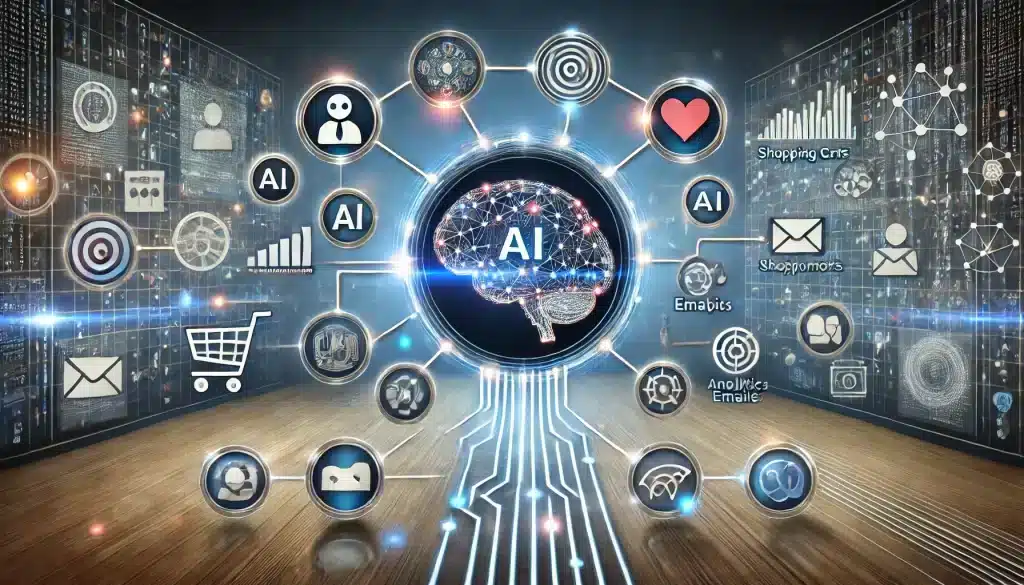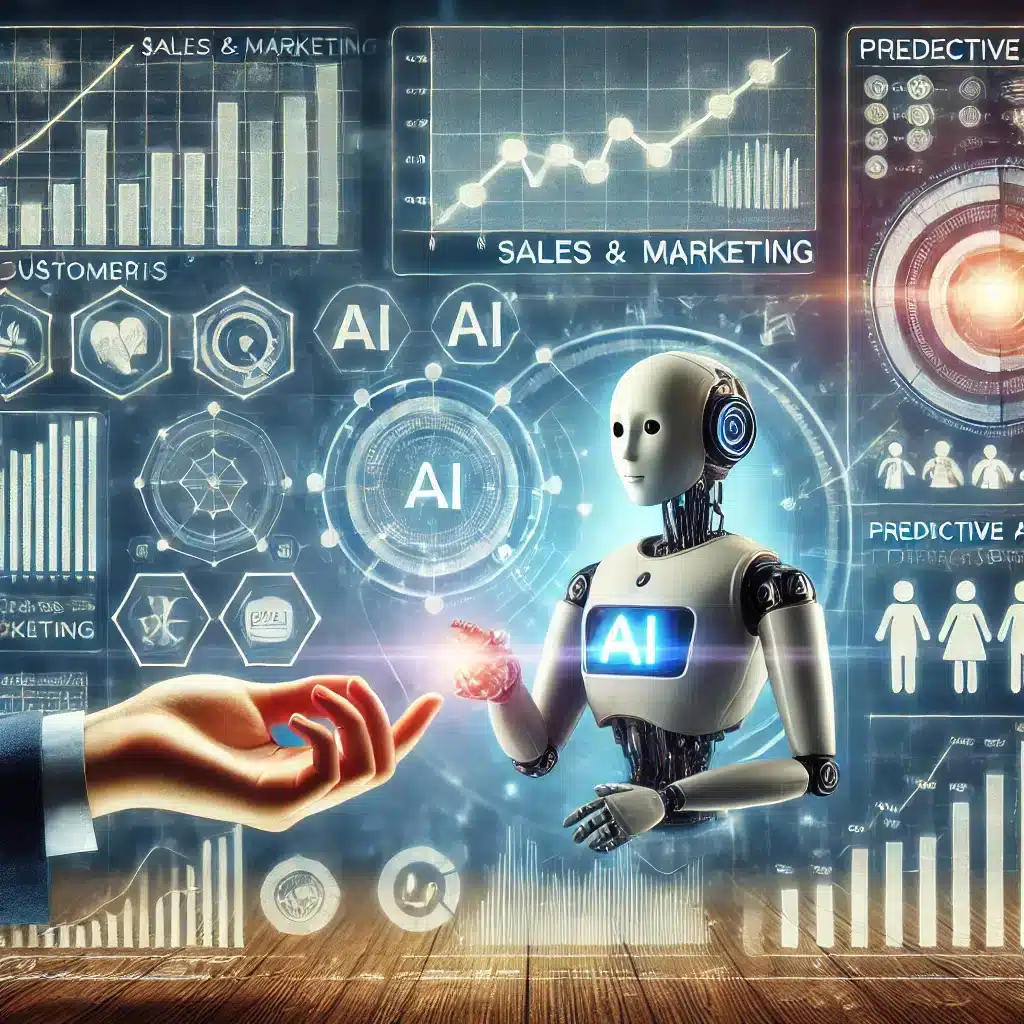This era of the constantly evolving expectations of the consumer makes it increasingly challenging for businesses to ensure a really differentiated and meaningful experience that personally relates to customers. Crafting seamless, consistent, and personalized journeys is no longer a nicety—it’s a necessity. The future of customer journey orchestration is AI-driven and will revolutionize the ways businesses understand and interact with customers.
This all-encompassing guide goes deep into the subtleties of AI-powered customer journey orchestration, its advantages, implementation strategies, and what it holds for businesses into the future across industries.
What is AI-Powered Customer Journey Orchestration?
At its core, AI-powered customer journey orchestration refers to the use of artificial intelligence to analyze, predict, and influence customer interactions across multiple touchpoints. Unlike traditional methods based on static pathways, AI dynamically adapts to real-time customer behaviors, ensuring personalized and contextually relevant engagement.
In simple terms, AI identifies patterns and preferences in a large amount of customer data to help businesses tailor experiences based on the needs of each individual customer. Whether it’s personalized product recommendations, predictive support, or targeted marketing campaigns, AI ensures that businesses are ahead of the curve when it comes to meeting customer expectations.

The Evolution of Customer Journey Mapping
Traditional customer journey mapping is about charting predefined pathways that customers may take to interact with a brand. While effective to an extent, these methods do not resonate well in the dynamic today, where customer behavior gets influenced in real-time by multiple factors.
AI revolutionizes the customer journey mapping by introducing:
- Dynamic Pathways: Adapting to real-time customer actions.
- Data-Driven Insights: Making predictions by using historical data and insights from real-time data.
- Scalability: Managing complex journeys across millions of customers simultaneously.
For example, if a customer leaves the shopping cart, an AI system can instantly intervene by offering a discount or providing assistance, thus increasing the chances of conversion.
How AI Enhances Customer Journey Mapping
1. Real-Time Adaptation
One of the strong features of AI in customer journey orchestration is real-time adaptation. AI identifies moments of friction by analyzing live interactions and takes proactive steps to address them.
Example:
A customer browses an e-commerce website and lingers on a product page but does not proceed to checkout. AI detects this behavior and triggers a chatbot to offer help, such as answering questions or providing a limited-time discount.
This fast response eliminates the drop-off and simultaneously makes the whole experience more satisfactory for a customer.
2. Personalized Customer Interactions
Modern marketing is built upon personalization, and AI carries this to the next level, where it processes vast amounts of data to reveal individual preferences, patterns of purchasing, and browsing.
How It Works:
- AI analyzes past interactions to recommend the product or services that might interest a customer.
- Emails, ads, and notifications all are customized to strike an emotional chord with the customers’ current needs and preferences.
This level of personalization creates a sense of exclusivity, strengthening customer loyalty and driving engagement.
3. Predictive Analytics
AI does not react to customer behavior; instead, it predicts it. Predictive analytics predicts future actions based on historical data for a business.
- Anticipating Needs: The AI predicts the time when a customer needs help or further accessories.
- Preemptive Involvement: AI will know when the customer is likely to buy and will send offers or recommendations precisely at that time.
Example: Subscription-based Service-A “subscribe now” reminder may be released by an AI system that predicts the proximity of the customer’s renewal date.
Benefits of AI in Customer Journey Orchestration
1. Real-Time Personalization
The days of generic marketing campaigns are gone. AI allows for real-time personalization, ensuring that the customer receives the right message at the right time through the right channel.
Impact:
- Improved engagement rates.
- Increased conversion rates.
- Customer satisfaction is improved.
Whether it is an email campaign, a social media ad, or a website experience, AI ensures every interaction feels relevant and valuable.
2. Consistency Across Channels
Consumers today engage with companies across a variety of platforms, including social media, websites, apps, and in-store visits. AI makes sure that these exchanges are regular and coordinated.
How It Works:
- AI can generate a single profile for every consumer thanks to centralized customer data.
- This profile is used to customize interactions, guaranteeing smooth channel transitions.
AI’s consolidated data method, for example, enables a consumer who initiates a conversation on a mobile app to carry on it in-store without repeating their worries.
3. Enhanced Customer Retention
AI creates loyalty and reduces churn by proactively fulfilling customer needs and delivering personalized experiences. Customers are more likely to be loyal to brands that are able to predict their needs and make them feel appreciated.
Case Study:
A telecom company used AI to predict when the customers were likely to cancel their subscriptions. By proactively offering tailored solutions, the company reduced churn by 30%.
Implementing AI-Powered Customer Journey Orchestration
Adopting AI for customer journey orchestration requires a strategic approach. Here’s how businesses can get started:
1. Data Integration
Amalgamate data from each touchpoint into a common platform. This includes your website analytics, CRM, social media interactions, among others.
Why It’s Important:
Centralized data enables AI to create accurate profiles of the customer and thus deliver consistent experiences.
2. AI Model Training
Utilizing past data, train AI models to spot trends, forecast behavior, and produce useful insights.
Best Practices:
- To prevent biases, use a variety of datasets.
- To increase accuracy, add new data to models on a regular basis.
3. Continuous Optimization
For AI systems to continue to function well, constant observation and improvement are necessary. Review performance measures frequently, and make necessary strategy adjustments in light of new information.
Key Metrics to Monitor:
- Customer engagement rates.
- Conversion rates.
- Retention rates.
Challenges in AI-Powered Orchestration and How to Overcome Them
The benefits of AI-powered orchestration come with challenges. The reliance on customer data for heavy usage is a data privacy concern. Businesses must invest in robust security measures and maintain transparency in their data usage policies, ensuring compliance with regulations like GDPR.
Another challenge is integration into legacy systems, as old structures are mostly not able to support tools with AI. Businesses can surpass this by adopting scalable solutions that fit into existing platforms or planning gradual upgrades for more advanced platforms.
Another barrier is the high costs of implementation, especially for smaller businesses. One practical way forward might be to begin with less expensive AI tools and start more modestly scaled initiatives, scaling up as ROI becomes evident.
Future Trends in AI-Powered Customer Journey Orchestration
The future of AI in the orchestration of customer journey is full of promise and promise by continuous technological progress.
- Voice and Conversational AI has a lot of promise wherein voice assistants like Alexa and Google Assistant are going to play major roles in customer interactions. Businesses can leverage these platforms to create frictionless voice-driven engagements that boost user convenience and satisfaction.
- Hyper-personalization would be taken to the extreme level. AI systems shall analyze even intricate factors, such as mood, the time of day, or weather conditions, to serve the highly personalized interactions; customer experiences shall be highly relevant and impactful.
- Integration of Augmented Reality or AR: It’s another new frontier. Customers will experience interaction with products in virtual environments to allow immersive experiences that shall not only increase engagement but influence purchasing decisions as well.
All these emphasize the potential that AI may come to redefine customer journey orchestration and new ways that businesses might connect and delight their audiences.
Conclusion
AI-powered customer journey orchestration is changing the way businesses engage with their customers. Real-time personalization, predictive analytics, and cross-channel consistency – all these are unprecedented opportunities in using AI to enhance customer experience.
As technology continues to evolve, so will the possibilities of AI in customer journey orchestration. More will be possible for businesses to engage with their audiences in more sustainable ways. By embracing AI today, businesses will establish themselves as leaders in the customer-centric world of tomorrow.
FAQs
1. What industries reap the most benefit from AI-powered customer journey orchestration?
Retail, e-commerce, healthcare, finance, and telecommunications stand to significantly benefit from increased personalization and streamlined customer interactions.
2. Can small businesses really afford AI-powered solutions?
Affordable AI tools abound that cater to the small and medium-sized business, promising scalable solutions.
3. How does AI guarantee data privacy?
AI tools are provided with robust security features, and businesses must comply with data protection regulations like GDPR in order to protect customer data.
4. What is the ROI of implementing AI-powered orchestration?
While ROI may vary, businesses can typically see improved customer retention, higher engagement rates, and increased revenue within months of implementation.
5. How can businesses begin implementing AI for customer journeys?
I would start with data integration, select scalable AI tools, and focus on a narrow use case to pilot before scaling it out.



